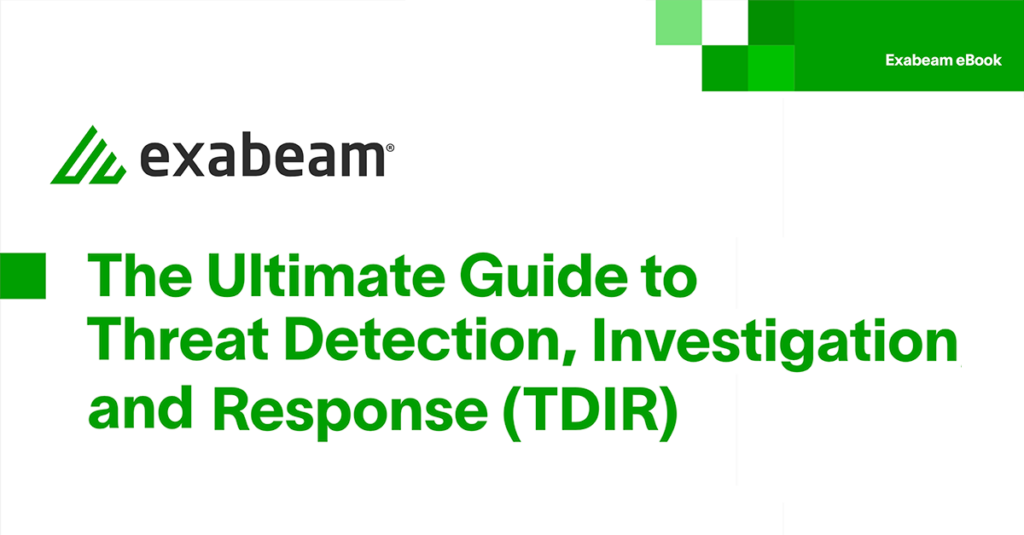The proliferation of ongoing of data breaches across sectors and geographies highlights an urgent need for robust cybersecurity measures. High-profile incidents have resulted in significant financial and reputational damage, underscoring the importance of advanced threat detection, investigation, and response (TDIR) strategies. These strategies must be both effective against current threats and adaptable to future challenges. Consequently, organizations worldwide are ramping up their cybersecurity defenses. A recent IDC report commissioned by Exabeam indicates that cybersecurity spending exceeded $92 billion in 2022, with projections to surpass $170 billion by 2027.
Effective TDIR goes beyond the adoption of the latest tools; it demands a strategic overhaul in how threat intelligence is collected, analyzed, and applied. Security operations centers (SOCs) are at the forefront of this shift, tasked with implementing solutions that increase efficiency and bolster defense mechanisms.
In this article:
- Understanding TDIR challenges
- Innovative solutions from Exabeam
- The path forward
- Unlock advanced TDIR strategies
Understanding TDIR challenges
The IDC report sheds light on several impediments to the effectiveness of TDIR workflows, including:
- Investigation bottlenecks: The investigation phase is often impacted by time-intensive, manual tasks. This inefficiency, compounded by the need to navigate multiple tools and dashboards, can lead to analyst burnout and high turnover rates.
- Limited visibility: Modern IT environments, complicated by the proliferation of cloud services and edge computing, often suffer from limited visibility, with organizations able to monitor only 66% of their IT environment on average. This hampers effective threat detection and complicates investigation and response efforts.
- Knowledge gaps: The development and implementation of effective TDIR strategies are hindered by widespread knowledge gaps within organizations where different teams have different knowledge gaps, for example, when a security team understands packet analysis, but not authentication protocols. This deficiency can lead to inefficient incident management and severe repercussions in the event of a breach.
- Lack of automation in TDIR workflows: Despite the benefits of automation, the majority of organizations have automated less than half of their TDIR processes. This shortfall introduces inconsistencies and slows down threat response.
- Insufficient threat intelligence: The effectiveness of threat detection and response heavily relies on the quality of threat intelligence. However, SOCs often struggle to access timely and actionable intelligence through manual lookups and internet searches, resulting in a reactive, rather than proactive, security posture.
Innovative solutions from Exabeam
Exabeam addresses these challenges with cutting-edge solutions:
User and entity behavior analytics (UEBA): Leading the charge in UEBA, Exabeam applies analytics, machine learning (ML), and deep learning to detect anomalies across IT environments, uncovering risks in the unmonitored 34% of environments.
Automation and orchestration: Automated Threat Timelines streamline the response process, offering visual context for incident investigations and greatly reducing the time spent on TDIR activities.
Natural language processing (NLP): The Exabeam Security Operations Platform features Exabeam Copilot, equipped with NLP and generative AI, facilitating complex search queries and accelerates analyst training with a security-centric large language model (LLM) powered by Google’s Sec-PaLM 2 and Vertex AI.
Centralization of threat intelligence: Exabeam promotes the integration of disparate data sources into a unified platform, enhancing threat detection and response capabilities. This approach encourages intelligence sharing across teams, breaking down silos that prevent effective TDIR.
The path forward
As SOCs adapt and innovate, so too must their tools and workflows. Traditional manual methods of reviewing logs and alerts are not only time-consuming but also prone to errors. By integrating AI, automation, analytics, and centralized threat intelligence, Exabeam offers a holistic approach to modernizing cybersecurity defenses. This is a pivotal moment for organizations looking to strengthen their cyber defenses against emerging and evolving threats.
Unlock Advanced TDIR Strategies
Discover the critical insights and advanced strategies needed to enhance your TDIR capabilities. Read The Ultimate Guide to TDIR — a comprehensive resource with essential practices to understand and master the TDIR workflow. Leverage the latest in security information and event management (SIEM) technologies, optimize your log management, and achieve excellence in incident response.
Elevate your cybersecurity strategy and improve your security team’s efficiency and effectiveness. Download your guide now.

Similar Posts
Recent Posts
Stay Informed
Subscribe today and we'll send our latest blog posts right to your inbox, so you can stay ahead of the cybercriminals and defend your organization.
See a world-class SIEM solution in action
Most reported breaches involved lost or stolen credentials. How can you keep pace?
Exabeam delivers SOC teams industry-leading analytics, patented anomaly detection, and Smart Timelines to help teams pinpoint the actions that lead to exploits.
Whether you need a SIEM replacement, a legacy SIEM modernization with XDR, Exabeam offers advanced, modular, and cloud-delivered TDIR.
Get a demo today!












